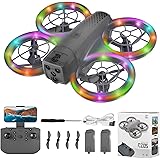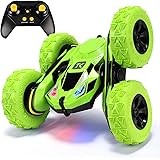The subtle whirring and distinctive mechanical sounds of drones, as showcased in the accompanying video, tell a fascinating story far beyond their visual capabilities. Beyond capturing breathtaking aerial footage, the often-overlooked aspect of DJI drone sound significantly influences pilot experience, public perception, and the quality of captured media. While the video provides an auditory experience of various drones, understanding the underlying factors contributing to these sounds is crucial for both enthusiasts and professional operators. This comprehensive guide delves into the intricate world of drone acoustics, helping you discern what makes a drone loud or quiet and why it truly matters in diverse operational scenarios.
Understanding Drone Noise: More Than Just a Buzz
Drone noise extends beyond a mere nuisance; it presents practical implications for pilots and communities alike. The perceived loudness of an unmanned aerial vehicle can dictate where and when it is appropriate to fly, influencing everything from neighborhood relations to wildlife disturbance. Furthermore, for content creators, the drone’s operational sound can significantly impact the quality of on-board audio recordings, often necessitating extensive post-production work to achieve clear soundscapes.
To accurately assess drone acoustics, we often refer to the decibel (dB) scale, which measures sound intensity. This logarithmic scale means that every 10 dB increase represents a tenfold increase in sound power, making even small decibel changes perceptually significant. For example, a whisper registers around 30 dB, normal conversation averages 60 dB, and a lawnmower might hit 90 dB. Understanding these benchmarks allows pilots to contextualize a drone’s sound profile and anticipate its potential impact on its surroundings. Consequently, minimizing drone noise has become a key design objective for manufacturers like DJI, seeking to balance power with acoustic discretion.
The Engineering Behind the Sound: What Makes Drones Loud?
The primary source of DJI drone sound originates from its propellers, which generate aerodynamic noise as they cut through the air. This complex phenomenon involves several contributing factors, each playing a critical role in the overall sound signature. Analyzing these elements provides valuable insight into the acoustic performance of various models.
Propeller aerodynamics directly influence the character and intensity of drone noise. Blade shape, propeller diameter, and tip speed are paramount; faster-spinning or less aerodynamically efficient blades tend to produce more turbulent airflow and, consequently, greater noise. Vortex shedding, the swirling air patterns generated at the propeller tips, creates pressure fluctuations that translate into audible sound. Additionally, the number of blades and their specific pitch can alter both the volume and the frequency of the drone’s hum, contributing to its unique acoustic fingerprint.
Beyond propeller design, the drone’s motors and overall construction also play a part in its acoustic profile. Brushless DC motors, while efficient, can produce their own subtle hum or vibration, especially when operated at specific RPMs or when imperfectly balanced. The drone’s frame and internal components can resonate with these vibrations, amplifying certain frequencies. Pulse Width Modulation (PWM) signals, used to control motor speed, can also introduce high-frequency electrical noise, though this is often less prominent than the aerodynamic sounds.
Dissecting DJI Drone Sound Profiles: General Observations
While specific decibel measurements for DJI drones can vary significantly based on flight conditions, altitude, and distance from the observer, we can make general observations about their acoustic characteristics. DJI consistently invests in noise reduction technologies, striving to improve the user experience and expand operational possibilities. Furthermore, their continuous development introduces more efficient motor designs and advanced propeller geometries across their product lines.
Compact and mini drones, such as the DJI Mini series, often exhibit a higher-pitched, more “buzzy” sound due to their smaller, faster-spinning propellers. Despite this, their overall volume at a distance might be less intrusive compared to larger models because they displace less air. Mid-range drones, like those in the Mavic series, strike a balance, featuring optimized propeller designs that reduce noise without compromising performance. These models often possess a more refined, less aggressive hum than their predecessors. Professional-grade drones, such as the Matrice or Inspire series, typically employ larger, slower-spinning propellers that produce a deeper, more powerful hum. Although potentially louder in absolute terms, the lower frequency of their sound can sometimes be perceived as less irritating than a high-pitched whine, especially for certain applications.
Strategies for Minimizing DJI Drone Noise
Pilots seeking to reduce the acoustic footprint of their DJI drone sound have several effective strategies at their disposal. Implementing these techniques can enhance both the flying experience and the public perception of drone operations.
One of the most impactful upgrades involves utilizing low-noise or “stealth” propellers. These specially designed propellers feature revised aerodynamic profiles and sometimes different materials that generate less turbulent airflow, significantly reducing overall noise levels without sacrificing flight performance. Many third-party manufacturers and even DJI itself offer these alternatives for popular models. Additionally, consistent maintenance, including ensuring propellers are clean, undamaged, and perfectly balanced, prevents unnecessary vibrations and acoustic inefficiency.
Beyond equipment modifications, thoughtful flight techniques play a crucial role. Operating the drone smoothly, avoiding rapid accelerations or decelerations, can prevent sudden spikes in propeller RPM that generate louder bursts of sound. Flying at higher altitudes, where permissible and safe, allows sound to dissipate over a greater distance, making the drone significantly quieter from the ground. Considering the flight location carefully, steering clear of noise-sensitive areas like residential zones or wildlife habitats, also demonstrates responsible piloting and minimizes potential disturbances. These proactive measures underscore a commitment to harmonious drone integration.
The Impact on Content Creation
For aerial filmmakers and videographers, the presence of DJI drone sound can be a significant challenge when attempting to capture pristine audio. The drone’s operational noise can easily bleed into on-board microphones, making dialogue or ambient sounds unusable. This often necessitates either muting the drone’s native audio entirely or engaging in extensive, time-consuming post-production noise reduction. Professional audio cleanup tools can mitigate some drone noise, but they rarely eliminate it completely without affecting the quality of desired sounds.
Consequently, the inherent quietness of a drone becomes a considerable advantage for specific content creation scenarios. When filming wildlife, recording interviews in remote locations, or striving for discreet cinematic shots, a low-noise drone is invaluable. It allows creators to capture clearer on-scene audio, reducing the need for extensive audio post-processing and preserving the natural soundscape of the environment. Ultimately, a quieter drone enables more authentic and high-quality productions, allowing the visuals to be complemented by equally impressive audio.
Understanding and managing the DJI drone sound is more than a technical curiosity; it is a vital aspect of responsible and effective drone operation, impacting everything from community relations to the professional quality of your aerial footage.











